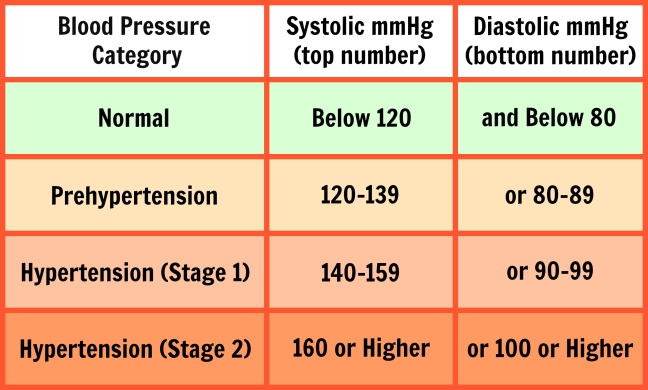Have you ever wondered what the top and bottom numbers of your blood pressure reading mean and what they reveal about your health? When your doctor tells you your blood pressure reading, such as “120 over 80”, the two numbers represent your systolic and diastolic blood pressure, which essentially tells you the amount of pressure in your blood vessels when your heart beats (systolic) and is at rest (diastolic). Jointly, your systolic and diastolic blood pressure reveal how hard your heart has to work to pump blood through blood vessels called arteries, providing all of your cells with oxygen and nutrients.
The Heart and Stroke Foundation defines high blood pressure, or hypertension, as having elevated blood pressure in your arteries due to your heart having to exert extra effort to pump blood through blood vessels. Written as a ratio of systolic over diastolic, blood pressure is measured in milligrams of mercury (mm Hg), for example 120/80 mm Hg.
Systolic Blood Pressure. The top number in the ratio (120 in the above example) is systolic blood pressure and is the higher of the two numbers. This is the pressure in your arteries when your heart muscle contracts.
Diastolic Blood Pressure. The bottom number in the ratio (80 in the above example) is diastolic blood pressure and is the lower of the two numbers. This is the pressure in your arteries between heartbeats, when your heart muscle relaxes.
From the table below, you can infer your blood pressure category based on your systolic and diastolic readings. If your systolic and diastolic blood pressure fall into two different categories, your category is the higher of the two categories. For example, an individual with a blood pressure reading of 150/105 mm Hg would have stage 2 hypertension.
Blood Pressure Categories

Normal Blood Pressure. If you are 20 years or older, a systolic reading below 120 and a diastolic reading below 80 is considered normal and puts you at the lowest risk for developing hypertension. If you have a normal blood pressure reading, maintaining or adopting a healthy lifestyle could help keep your risk of developing heart disease low. Numbers above 120/80 mm Hg put your at a higher risk of developing hypertension and indicate that you should adopt heart healthy habits.
Prehypertension. Adults with systolic blood pressure reading between 120 and 139 or a diastolic blood pressure reading between 80 and 89 are considered to have prehypertension. Although medication is not necessary for prehypertension, having even slightly elevated blood pressure puts you at an increased risk of developing heart disease and stroke and indicates a need for making positive lifestyle changes.
Hypertension (Stage 1). If your blood pressure has a systolic reading between 140 and 159 mm Hg or your diastolic reading is between 90 and 99 mm Hg and it is consistently within this range, your doctor will diagnose you with stage 1 hypertension. Since blood pressure can change dependent on day-to-day factors such as stress levels, your blood pressure should be measured on at least 3 separate occasions to confirm your diagnosis of high blood pressure.
While adopting a healthy lifestyle can help boost your heart health and reduce your risk of developing hypertension, your doctor might prescribe medication if your blood pressure doesn’t normalize within one month of developing a healthy lifestyle.
Hypertension (Stage 2). Stage 2 hypertension is a more serious form of high blood pressure that places you at the highest risk for having heart disease or stroke. Stage 2 hypertension occurs if your systolic reading is 160 mm Hg or your diastolic reading is 100 mm Hg or higher. If you have stage 2 hypertension, your doctor will recommend medication to help lower your blood pressure. While taking medication can help keep your blood pressure in check, making healthy lifestyle changes is essential for maintaining or improving your health.
No matter which blood pressure category you fit into, the good news is that adopting and maintaining a healthy lifestyle can help keep your blood pressure in check and reduce or slow the progression of heart disease.
Heart Healthy Habits. Adopting a healthy diet, exercising consistently, limiting your sodium intake, quitting smoking, getting adequate sleep, and engaging in stress-relief activities are all elements of a healthy lifestyle. While each on its own plays a part in improving your health, to reap the maximum health benefits it is recommended to practice all in conjunction.
How do your current lifestyle habits impact your blood pressure readings and overall health? Find out with the Salu Pulse+ wearable— the first compact wearable to measure blood pressure (in addition to heart rate, blood oxygen levels, and activity levels) without an inflatable cuff. Regular blood pressure monitoring with the Salu Pulse+ could reveal how your lifestyle habits are impacting your blood pressure readings. Based on your unique lifestyle and health goals, the Salu Pulse+ provides meaningful suggestions on how to achieve a deep sense of wellbeing.





